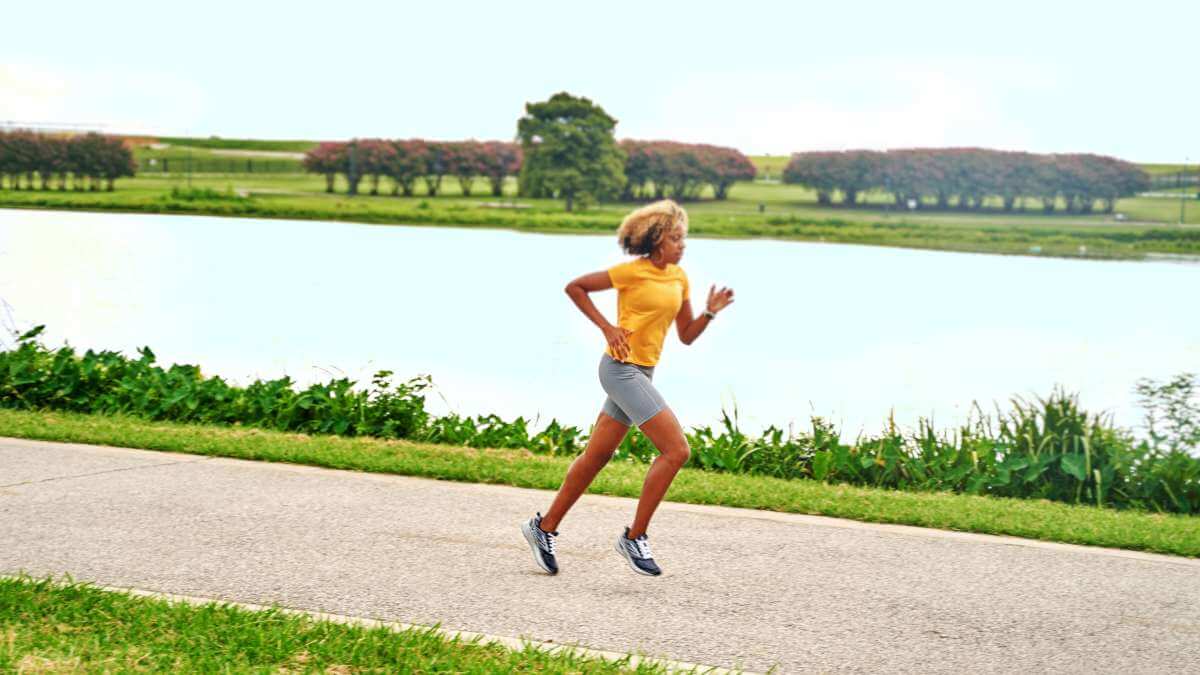Running cadence is widely measured in training, as it’s an important parameter for athletes. Coaches, especially, use it to monitor the performance and development of their athletes. Although there’s no one-size-fits-all, when it comes to stride rate — it’s a purely personalized parameter, influenced by your biomechanics, and technique — you can determine the optimal running cadence for you; always in collaboration with your coach.
What is running cadence, and how can you measure it?
In running, cadence is the total number of steps you take per minute. It can also be the number of steps one foot makes per minute. If you don’t have a watch to automatically measure your cadence, you can alternatively count the number of times your foot touches the ground in a minute.
Along these lines, the speed of a runner — or a triathlete — is determined by two factors: their cadence and their stride length. Elite athletes, for instance, have a higher running cadence (> 90) than other athletes; whose cadence usually ranges between 78 and 82, depending on their level.
What does optimal running cadence depend on?
As mentioned, the running cadence is different for every athlete, since it’s a personalized parameter. Likewise, the optimal running cadence, highly depends on the athlete’s individual characteristics and capabilities; as well as needs.
To start with, when deciding on an athlete’s optimal running cadence, the coach first needs to consider the athlete’s anatomy. For example, a taller athlete naturally has a longer stride length, than an athlete who’s shorter. Another important factor that affects the running cadence is the athlete’s training experience; as does their ability to perceive the coach’s feedback — and efficiently implement it in their training.
What’s more, a strong muscular system is also very important here. Through strength training, the athlete will, indeed, improve their stride; and maintain the optimal running cadence rate for them.
How can you improve your cadence?
In all truthfulness, optimal running cadence is a combination of skills; and it’s not enough for an athlete to simply increase pace, in order to improve their cadence rate. So how can you improve your cadence, then? Well, we’ve already offered one tip in a previous article — cue: strength training.
Indeed, you need to have a strong musculoskeletal system that will support your body; and, enable you to safely reach a higher speed. Other than that, optimal running cadence requires well-developed movement coordination, and running technique.
With these three ticked off your list, along with a well-structured personalized training program — where both strength and speed are improved — you’ll be able to maintain a fast pace of execution. In other words, you’ll be able to maintain your optimal stride length, for a longer period of time.
To sum up
Cadence, in running, is an important KPI that is widely used in the training process. Given that this parameter affects your performance, finding the optimal running cadence for you is of utmost importance.
Using training watches enables you to measure this indicator effectively; as long as you allow your coach access to your data, to assess your progress and help you further improve. You can also use an online training platform, like Endogusto, for even better results.
In conjunction with the aforementioned points, you need to gradually increase your speed, too; when your coach deems it’s safe to do so, of course. Keep in mind that, ultimately, to improve your performance, you need to increase both your cadence and stride rate.
